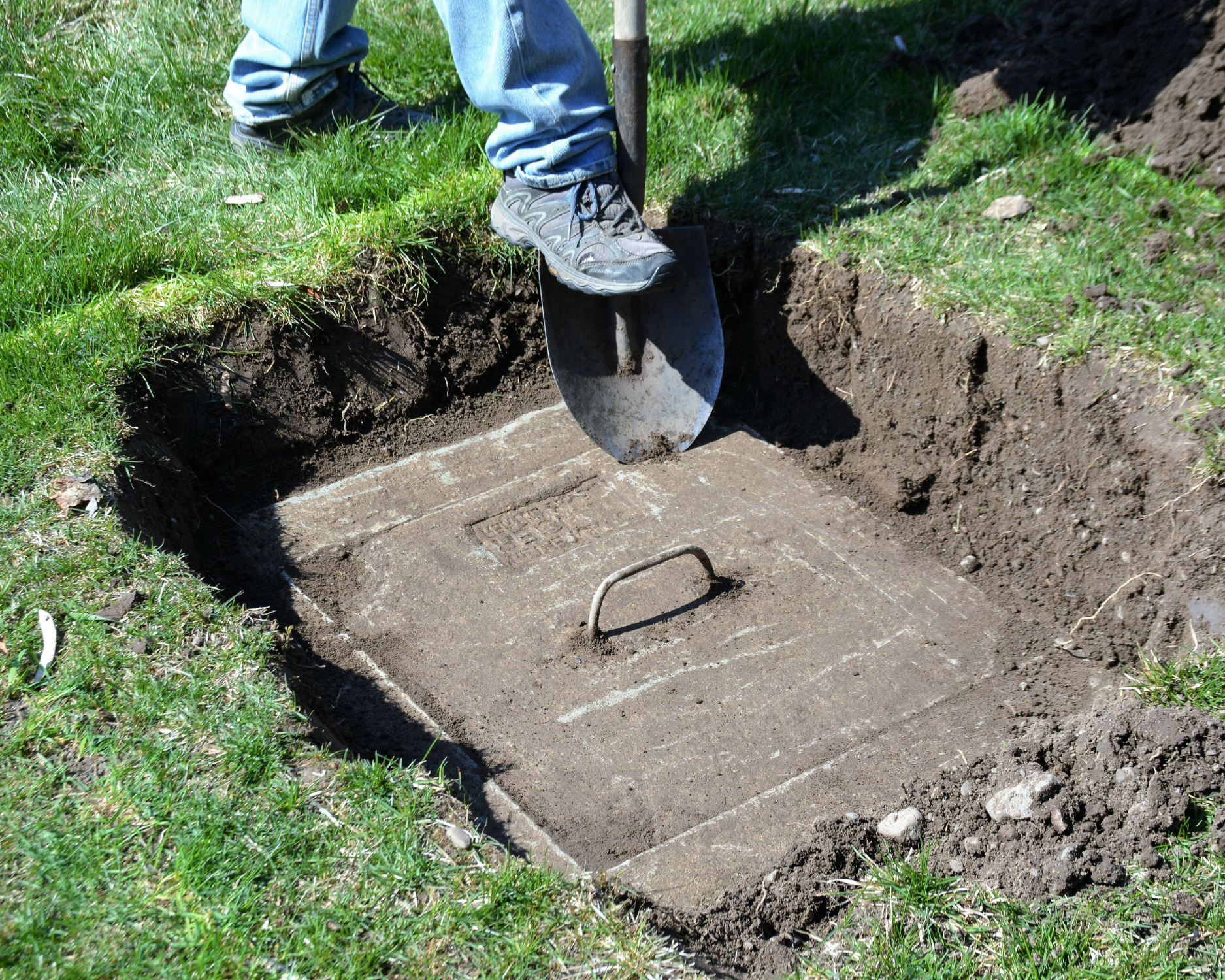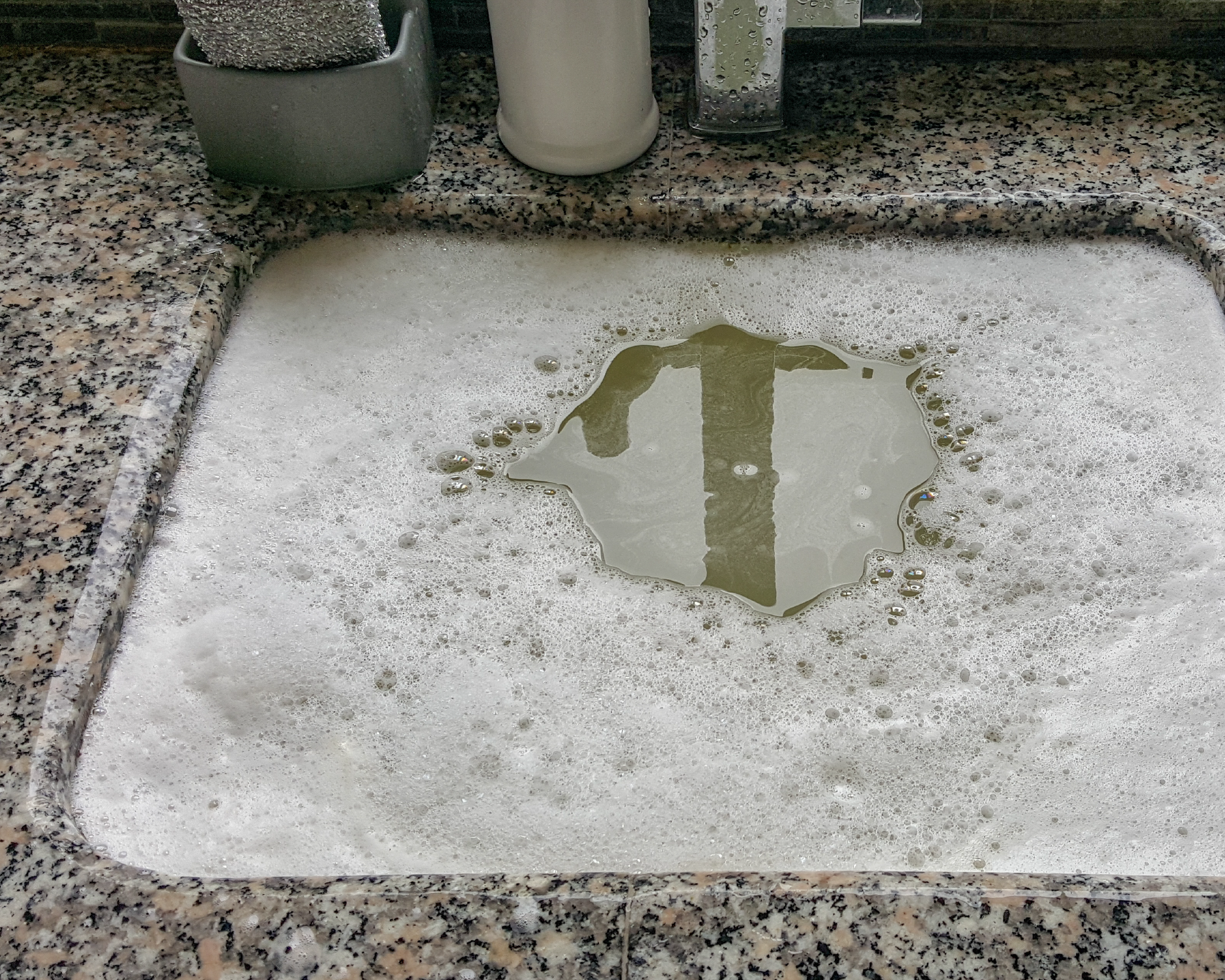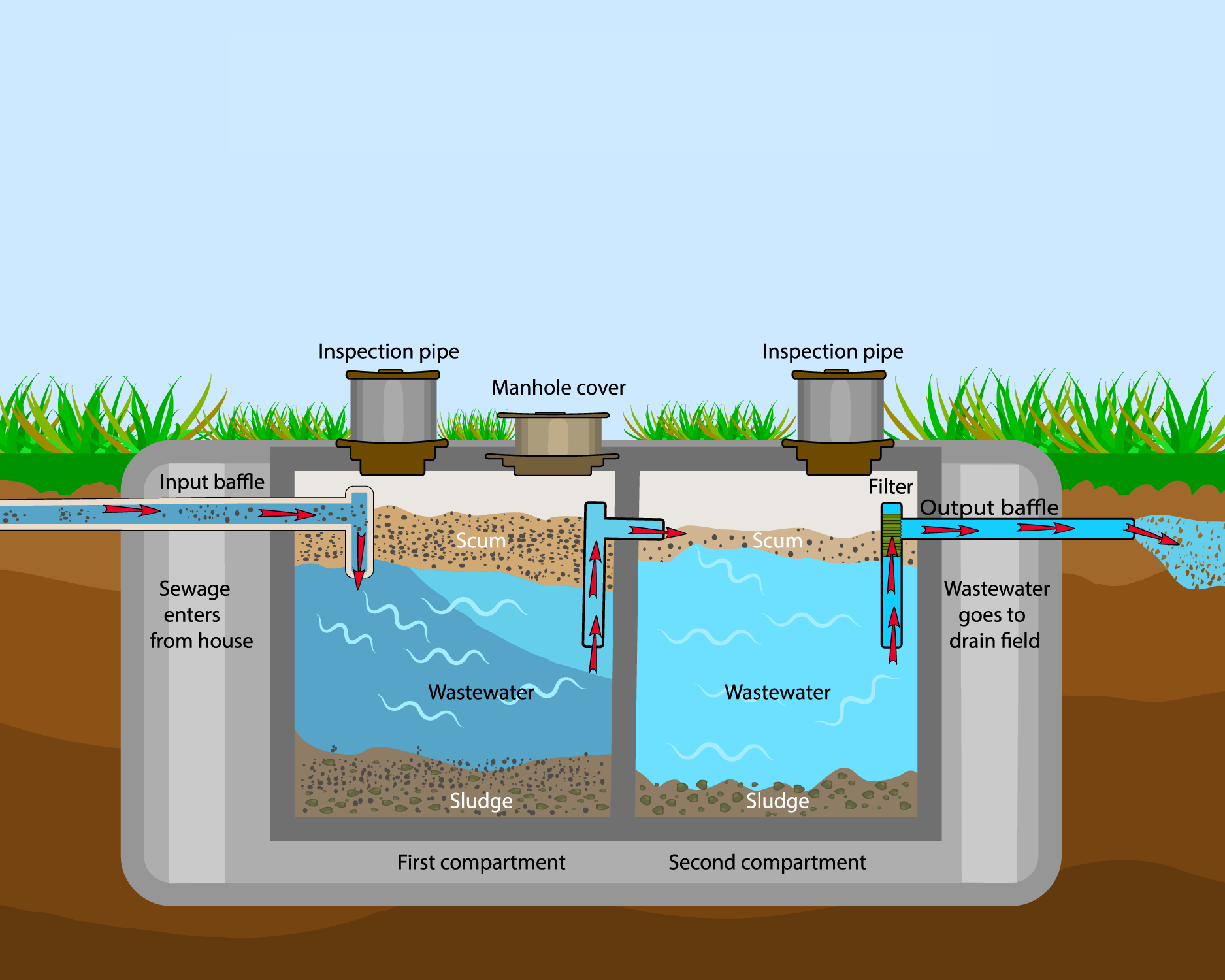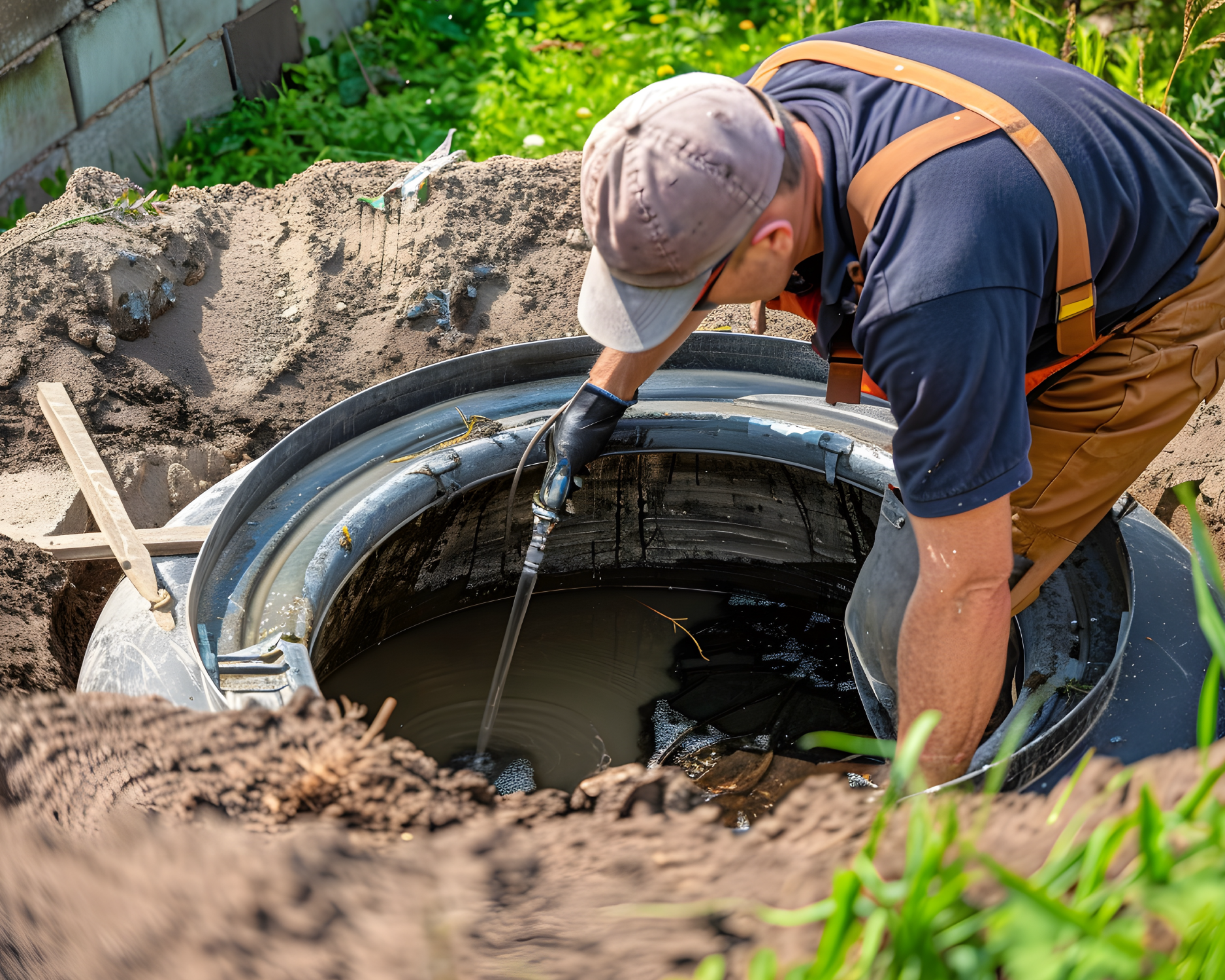Septic systems routinely handle challenging tasks, but maintaining them doesn't have to be difficult. These systems are essential for efficient waste removal, and their proper functioning is vital. A failing septic system can lead to various issues, including odors, leaks, clogs, and backups. Thus, keeping up with your septic system’s maintenance is crucial to prevent any inconvenience.
Whether you're a professional plumber, a homeowner, or somewhere in between, knowing how to maintain your septic system properly can prevent future problems and save you from unnecessary expenses. In this blog, we’ve compiled a detailed guide covering maintenance tips for your septic system, common problems to monitor, and how to solve them.
What Is a Septic System?
Some households have septic systems because they are located in areas without centralized sewer systems, often in rural or semi-rural regions where homes are spread out. These systems are individual wastewater treatment structures that efficiently manage and treat the household's sewage and greywater on site. Septic systems are essential for areas not serviced by municipal or communal sewer systems because they provide a practical and environmentally friendly solution for waste disposal.
By treating wastewater directly on the property, septic systems minimize the risk of pollution to local waterways, support groundwater recharge, and ensure that homes are sanitary and safe. They offer a self-contained, efficient alternative to sewer systems, especially in areas where the cost or logistical challenges of connecting to municipal sewer lines are prohibitive.
Before rolling up your sleeves, it’s crucial to grasp the basics of how a septic system works. A septic system treats sewage by allowing water to flow into a tank with different compartments. Here, solids settle, and bacteria break them down, eventually flowing through filters to prevent clogs.

Septic systems use nature's processes to purify household sewage. The system's heart, the septic tank, initiates this process by separating solid waste from liquids.
Following this separation, the liquid effluent flows into the drain field, an area designed to release the pre-treated water back into the environment. The soil plays a pivotal role by acting as a natural filter.
As the effluent percolates through the soil layers, microorganisms break down pathogens, and the soil filters out harmful particles. This natural purification process ensures that by the time the water reaches groundwater sources, it is clean and non-threatening to the environment.
How Long Do Septic Systems Last?
Septic systems are available in various types, each requiring specific maintenance. On average, a well-maintained septic system can last 20 to 30 years.
The cost of installing and maintaining a septic system is significant. According to HomeAdvisor, the average installation cost for a septic tank was around $7,000 in 2023. However, the total price can be between $10,000 and $25,000, depending on the system’s complexity and the project’s specific demands.
What Are the Signs of Septic System Issues?
Like any system in your home, your septic system sends distress signals when struggling. Early recognition can be the difference between simple maintenance and a costly, full-blown repair job.
This section will guide you through the critical indicators of septic system issues. By staying vigilant and responding promptly when these signs appear, you can ensure your system continues to function effectively.
Stay alert to these common red flags indicating your system needs attention:
Backups
Backups are a significant concern for septic system owners and can arise from various causes. Excessive flushing of non-biodegradable items, the buildup of solid waste and grease in the tank, and tree root infiltration into the drainage field are common culprits.
Educating household members about proper waste disposal is essential to prevent backups. Installing a filter to trap solids before they enter the drain field, regularly pumping the septic tank to remove accumulated solids, and avoiding planting trees near the septic system's components are also essential.
For clogged septic systems, consider introducing Oatey's Hercules® AID-Ox. Hercules® AID-Ox is a mild oxidizing powder formulated to maintain proper drainage and treat clogged and sluggish cesspools, seepage pits, dry wells, and drain fields. This product detoxifies and deodorizes stagnant drainage areas, enhancing conditions for aerobic bacterial growth.

Unpleasant Odours
When your septic system isn't functioning correctly, you may notice foul smells emanating from the drain field or septic tank area. Odours can indicate underlying issues within the septic system. Improper venting of the system and anaerobic bacteria are familiar sources of odours.
To mitigate odours, homeowners should ensure vents are clear of debris and functioning properly. Use septic-safe products to maintain a balanced bacterial environment and promptly address leaks or cracks in the system.
Wet Spots
Soggy areas or standing water near the septic tank or drain field can indicate leaks or an overflowing system. This saturation can prevent the soil from adequately filtering waste.
Solids Near The Outlet
During professional inspections, if the tank appears excessively full and there's a noticeable accumulation of sludge towards the top, the solids at the bottom have built up significantly. This buildup risks clogging the outlet, leading to potential backups and system failures. In such cases, scheduling a septic tank pumping and thorough cleaning is essential to remove the accumulated solids and restore proper functioning.

Problems may arise after the septic system has been pumped, leading to issues such as hydraulic overloading and disruption of the microbial balance in the tank. To prevent such problems, homeowners should gradually increase water usage after pumping to allow the drain field to adjust. In addition, adding beneficial bacteria supplements to restore microbial balance, monitoring the system closely for signs of overload, and scheduling regular maintenance checks following pump-outs can help ensure system stability.
How to Maintain a Septic System
Responding to warning signs promptly by seeking professional help can prevent more severe issues and prolong the lifespan of your septic system. Regular inspections and maintenance are crucial to catching and addressing problems early.
Hire A Professional
Regular inspection schedules and checklists are foundational to effective maintenance. Conducting periodic inspections allows homeowners to identify early signs of trouble, such as leaks, excessive solids accumulation, or drainage field saturation. By adhering to a checklist that covers key components like the tank, distribution box, and drain field, homeowners can systematically assess their system's condition and promptly address any issues.
Use Septic Safe Cleaners and Treatments
Using septic-safe cleaners and treatments can also aid in system maintenance. Certain household cleaners and chemicals can disrupt the natural processes occurring within the septic tank, leading to imbalances and potential damage. Opting for biodegradable and septic-safe alternatives helps preserve the microbial activity essential for breaking down waste efficiently. Additionally, periodic treatments with beneficial bacteria supplements can enhance the system's performance and prevent odor buildup and solids accumulation.

Practice Proper Waste Disposal
Proper waste-disposal habits play a crucial role in septic system maintenance. Educating household members about what can and cannot be flushed or drained into the system helps prevent the introduction of harmful substances that can disrupt the system’s microbial balance or cause clogs. Encouraging septic-safe products and minimizing harsh chemicals further contributes to maintaining a healthy septic environment.
Proactive septic system maintenance is essential to ensure the efficient operation and longevity of septic systems. Homeowners can safeguard their investments and minimize the risk of costly repairs and environmental harm by understanding the common issues that can arise, implementing effective preventive measures, and adhering to a regular maintenance schedule.